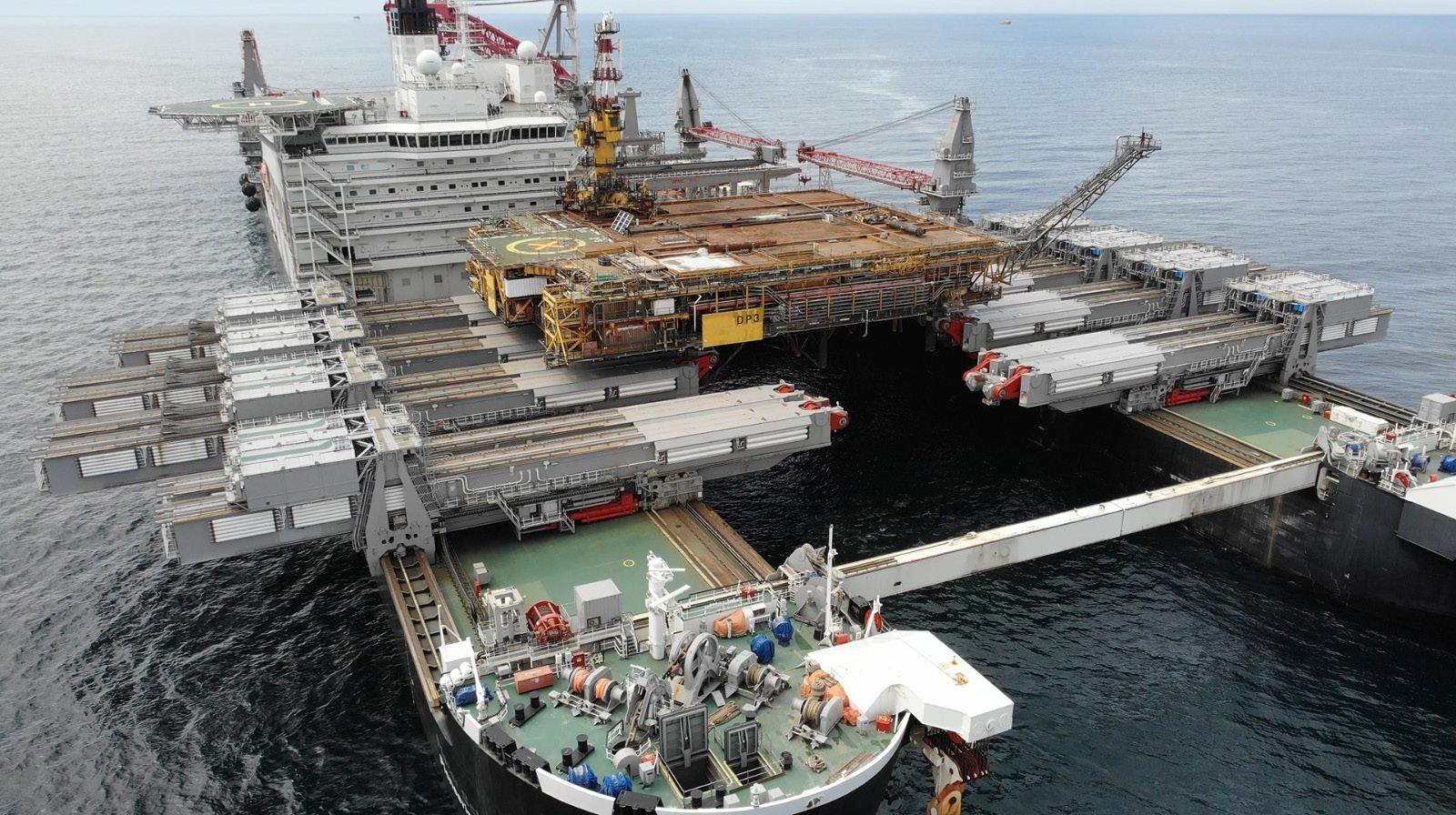Wind Power Rotor sails installation by Norsepower Finland’s Norsepower Oy has successfully installed two 35 m tall rotor sails for SEACARGO, a leading logistics provider in the North Sea market. This installation heralds the world’s first tiltable rotor sail, showcasing that vessels that need to negotiate height restricted routes can benefit from this fuel and emissionssaving solution. According to the analysis conducted by Norsepower and SEA-CARGO, the installation – on-board the 12,251 gt side-door ro/ ro vessel SC Connector can achieve a fuel consumption, fuel cost and carbon emissions reduction of up to 25%. In good wind conditions, the sailing vessel will maintain regular service speed by sail alone. As shipping transitions towards decarbonisation and meeting IMO’s targets of 2030 and 2050, the maritime transport industry is looking for proven solutions to ensure emissions reductions. Harnessing wind is a natural step to reducing emissions and fuel consumption. Norsepower’s rotor sail solution is a modernised version of the Flettner rotor, a spinning cylinder that uses the Magnus effect to harness wind power to thrust a ship. The SC Connector, which sails between Western Norway, Denmark, the Netherlands and Sweden and Poland, transits under multiple bridges and powerlines, requiring adaptation of the rotor sails to tilt to almost horizontal when required. The Norsepower rotor sail solution is the first third-party verified and commercially operational auxiliary wind propulsion technology for the global maritime industry. The solution is fully automated and detects whenever the wind is strong enough to deliver fuel and emission savings, at which point the Rotor Sails start automatically. Meanwhile, Norsepower Oy has announced the installation of five tilting Rotor Sails on-board a newbuild VLOC chartered by Brazil’s Vale. The first installation of Norsepower’s innovative Rotor Sails on a bulk carrier demonstrates the adaptability of the technology to reduce fuel consumption, fuel costs and reduce emissions across a variety of vessel types. The new vessel, a 325,000 dwt VLOC is owned by Pan Ocean Ship Management and will be chartered by Vale after construction is completed in China’s New Times Shipbuilding. To enable efficient cargo operations, the five 24
The VLOC Sea Zhoushan in New Times Shipbuilding
m high and 4 m diameter Rotor Sails can be tilted by using hydraulic cylinders.
Boomsma and Schram install eConowind systems Some eight months after signing the contract, Holland’s Boomsma Shipping has now installed its first two eConowind VentiFoil wind-assisted propulsion units. Even with the restrictions imposed by the pandemic, both companies worked closely together to manage the installation during a port call in Harlingen. The 6,477 dwt general cargo vessel Frisian Sea, has made its maiden voyage to Vasteras, Sweden with the VentiFoils in operation, during which eConowind has been conducting the start-up tests. The coming month will be used to optimise the system and operations and train the crew. The VentiFoils (Wind Assisted Ship Propulsion Units) by eConowind are designed as optimal compact (non-rotating) wing profiles, creating superior thrust by means of the principle of boundary-layer-suction, for which ventilators are mounted inside the VentiFoils. Due to the generated thrust by the eConowind unit, the thrust of the propeller can be reduced to maintain the same speed leading to fuel savings and emission reductions. The new Flatrack
Page 46 – www.shipandoffshorerepair.com
design has the flexibility of a container, being movable by the hatch crane, needs limited installation time and has possibility for use on several vessels. With this system the units can be positioned just in front of the superstructure during loading etc. The WASP (Wind Assisted Ship Propulsion) project is funded by the Interreg North Sea Europe programme, part of the European Regional Development Fund (ERDF) and brings together universities and wind-assist technology providers with ship owners to research, trial and validate the operational performance of a selection of wind propulsion solutions. The new Flatrack design based on Boomsma’s concept will now be added to our product portfolio as a standard product and has the possibility for use on several vessels.” Meanwhile, eConowind and Schram have announced their collaboration with eConowind to participate in research to optimise wind assisted propulsion and install two of their 16 m tall wind-assist VentiFoil units by the end of 2021. These will be retrofitted on the 89.9 m x14 m, 5,097 dwt general cargo vessel Anna, built in 2008. “When we realised the possibility of retrofitting a wind assist unit and how we can save CO2 emissions on our current ship, I was very enthusiastic right away - working with the wind instead of fighting the wind all the time. We always want to be innovative with our currently running vessels. The installation is relatively simple and operations are hardly












